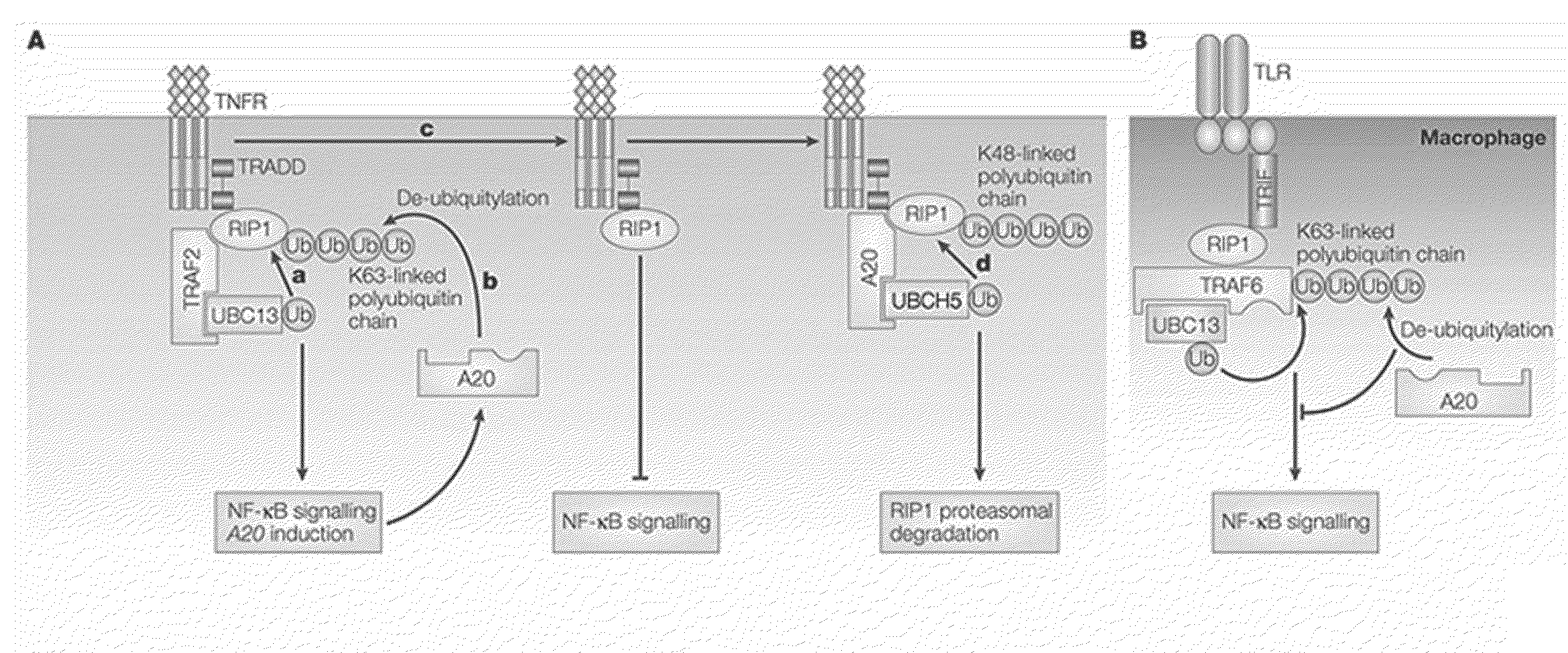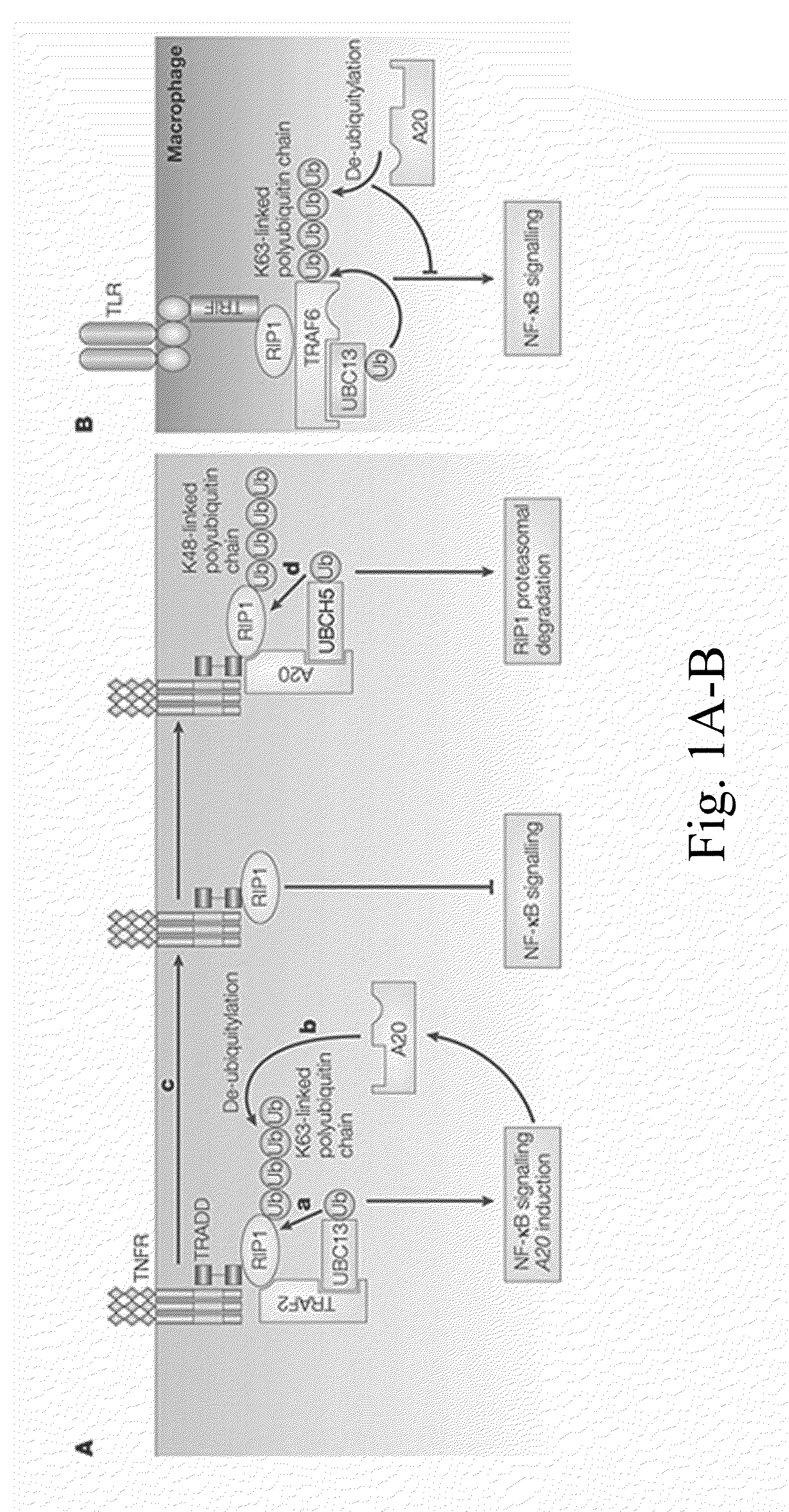Predicting and diagnosing patients with autoimmune disease
- Summary
- Abstract
- Description
- Claims
- Application Information
AI Technical Summary
Benefits of technology
Problems solved by technology
Method used
Image
Examples
example 1
Methods
[0151]With their collaborators, Dr. David Altshuler and Dr. Robert Graham at the Broad Institute at MIT, the inventors designed and performed a GWAS using the MN SLE family collection. The clinical and demographic features of this cohort have been well described (Gaffney 1998; Gaffney 2000; Gaffney 2006) and all cases meet 1982 revised ACR criteria for SLE. The basic design of the study was a case / control format using 478 unrelated Caucasian female SLE subjects. An Affymetrix 500K 5.0 SNP array was used as the genotyping platform. Each case was matched in a ratio of 1:5 with Caucasian controls from either the Welcome Trust Case Control consortium or the National Institute of Mental Health (world-wide-web at nimhgenetics.org) genotyped on the same Affymetrix platform as the study saving us tremendous expense in control genotyping. Furthermore, the ability to do 1:5 case / control matching substantially increases genetic power since the large number of controls results in more ac...
example 2
Results
[0153]The results of the analysis for all 314,000 SNPs is shown in FIG. 2, top panel. Reassuringly, the inventors readily identified the expected strong association in the HLA region and IRF5 locus (Graham 2006) (marked by arrows on the figure). To further investigate the strongest effects the inventors filtered the results based on p-values for the case / control analysis setting a strict genome-wide cutoff (p−6) followed by a TDT p-value filter (p<0.01). Nineteen SNPs met these conservative criteria. They then manually evaluated the cluster plots and determined that 2 SNPs clustered poorly which likely accounted for their very small p-values. The remaining 17 SNPs displayed tight, cleanly defined clusters consistent with a robust assay. Fourteen of these SNPs mapped to the HLA region and one mapped to IRF5.
[0154]Two novel associations were observed: RAD54B (rs6997115, OR=1.43, p=8.99×10−7 and TNFAIP3 (rs5029939, OR=2.29, p=8.49×10−9). RAD54B is a member of the SNF2 / SWI2 super...
example 3
Methods
[0160]The BE2 dataset is a case / control dataset comprised of 1313 SLE cases and 1226 controls selected from among those available through the Lupus Family Registry and Repository (LFRR) and University of Minnesota collections. There were 291 SLE cases in common between the LuMNAS GWAS and BE2 resulting in 1022 independent SLE cases available for the meta-analysis. The LLAS (Large Lupus Association Study) study is a multi-ethnic case / control association study performed at the OMRF in late 2007. In the LLAS study, 11,695 subjects (cases and controls) were genotyped using 20,506 SNPs producing over 239 million genotypes. A subset of samples and SNPs from the LLAS served as the primary replication dataset for the recently published SLEGEN consortium GWAS (Harley et al., 2008). From among the 3072 European American (EA) SLE cases and 3102 EA controls genotyped in LLAS, 1278 cases and 1774 controls were independent of LuMNAS and BE2 and thus available for inclusion in the meta-anal...
PUM
| Property | Measurement | Unit |
|---|---|---|
| Linkage disequilibrium | aaaaa | aaaaa |
Abstract
Description
Claims
Application Information
 Login to View More
Login to View More - R&D
- Intellectual Property
- Life Sciences
- Materials
- Tech Scout
- Unparalleled Data Quality
- Higher Quality Content
- 60% Fewer Hallucinations
Browse by: Latest US Patents, China's latest patents, Technical Efficacy Thesaurus, Application Domain, Technology Topic, Popular Technical Reports.
© 2025 PatSnap. All rights reserved.Legal|Privacy policy|Modern Slavery Act Transparency Statement|Sitemap|About US| Contact US: help@patsnap.com



